
Photo taken in 2017 by Ken Robb.
The Marine Hospital 1859-2020
November, 2020
In September of 1844, the City of Galena made its first attempt at establishing a Marine Hospital. Such hospitals were not new. An act calling for the establishment of a system of hospitals along the East and Gulf coasts was passed by the U. S. Congress in 1798 and signed by President John Adams. It provided for the care of sick or injured sailors (the term then used was seamen) and was funded by both the federal government and a 20 cents per month deduction on the wages of all employees of the river and ocean vessels of the time (http://www.marinehospital.org/past.htm retrieved 4 October 2020.)
Marine hospitals had nothing to do with the U.S. Marine Corps; they were for the sailors of the oceans and later for the boatmen of the interior waterways, many of whom had no access to healthcare, despite the importance of their occupations to the economic health of the nation. It was America's first entry into socialized health care.
The hazards of life on the water were many: there were boiler explosions, wrecks, collisions with river snags, and diseases like malaria, cholera, yellow fever and smallpox. Violence, alcoholism and social diseases were also rampant. As America moved westward and steamboat traffic on the inland waters increased exponentially the need to expand the program beyond coastal cities became apparent. Galena, the largest river port north of St Louis by the 1840s, saw the need, especially since New Orleans, St. Louis and Louisville already had such facilities.
The City Council in September of 1844 dutifully passed a petition directed to the United States Senate and House of Representatives asking for consideration in the establishment of such a hospital(s) for their city. Their case was presented in a brief and forthright manner, but with a novel funding system, based on the precedent of funds from the sale of Section 16 of every township to be used to fund public schools:
"...in this County and vicinity there are upwards of Fifteen Thousand persons engaged in mineing [sic] operations on the Public Domain - That they are generally men without families and necessarily suffer many privations...
"That the City of Galena is the head Commercial Emporium...of General Steam boat navigation - being some five hundred miles above Saint Louis....would therefore in view of the necessity as well as the advantages to be derived - Respectfully pray Congress to Grant to the City of Galena by legal subdivisions One Town[ship] of land to be appropriated or disposed of in erecting Marine and City Hospitals....Appropriating one part of said edifice where erected as a Marine Hospital of the United States and the other as a City Hospital."
(Copy housed at the Galena Public Library, Historical Collections Room, City of Galena files)
There is no record of any action being taken on the federal part of the proposal. It could be that Galena did not have a strong enough voice in the U. S. Congress. These hospitals--some of which were temporarily rented, leased, or in private homes--were mostly under local control and funding was provided by the aforementioned tax in conjunction with federal appropriations, all under the supervision of the Department of the Treasury. Put another way, these hospitals were largely in the hands of politicians and local customs officials--as was the case when Galena soon got its marine hospital.
But Galena's effort to get a hospital did not bear fruit until the election of a new congressman from Galena, Elihu B. Washburne, in 1852. It would be the shrewd and forceful Washburne who would soon establish a name for himself, Galena, and U. S. Grant (Figure 1).

Figure 1. Elihu B. Washburne
Powerful U. S. House Representative from Galena.
Galena-Jo Daviess County History Museum.
According to the National Register nomination for the Marine Hospital at Louisville, Kentucky, seven hospitals were authorized by an Act of Congress in 1837 for the "Western Waters" (https://npgallery.nps.gov/GetAsset/deee98e1-1ddb-42e5-b73f- 822958607ab9, pp. 8-12, retrieved 10 October 2020). Galena was not among them, but it was included in a second Act of Congress, passed 17 years later. Interestingly, of the hospitals constructed along inland waterways during this period prior to the Civil War, only the Louisville and Galena hospitals remain today. (See Appendix A.)
The Galena Weekly Northwestern Gazette reported the following in 1854:
On the 30th ult., a resolution was offered in the House of Representatives by Mr. WASHBURNE instructing the committee on Commerce to inquire into the expediency of establishing a Marine Hospital at Galena. The resolution was instantly passed. (Weekly Northwestern Gazette, 14 February 1854.)
The paper's editor later addressed reasons why such a hospital for boatmen on the inland waters was so vital for Galena and its river trade (See Figure 2):
There is no point in the country where a Marine Hospital is more needed than in this city. Our commerce has increased to such an extent within a few years, that Galena is now the third port, in point of Tonnage and Shipping on the Mississippi River. New Orleans and St. Louis being the only ports in advance of Galena at the present time. We learn that there are twenty-two steamboats now owned and enrolled here, and about one thousand seamen hailing from Galena. The whole number of boats in the Galena trade during the past season is about forty, and there have been within that time, one thousand arrivals of boats and barges at this port. These facts show not only the great want of a Marine Hospital here, where the large number of sick boatmen can be cared for, but a most gratifying state of things as connected with the prosperity of our city. (Weekly Northwestern Gazette, 27 November 1855.)

Figure 2. 1856 lithograph by E. Whitefield.
This is a very accurate portrayal of the Galena levee
during the height of the town's prosperity.
Galena-Jo Daviess County History Museum.
Good news had come earlier in the year when the editor of the Weekly Northwestern Gazette announced with some pride that an "agreeable" letter from Galena's "faithful Representative in Congress" had just arrived:
DEAR SIR: I have the pleasure to inform you, that a bill has just passed, making an appropriation of FIFTEEN THOUSAND DOLLARS FOR A MARINE HOSPITAL AT GALENA.
Yours, in haste.
B. WASHBURNE (Weekly Northwestern Gazette, 13 March 1855.)
But delays and hurdles yet remained. A plot of land near the city limits, but not within, had to be found. And it had to be "convenient to the Steamboat Landing" (Weekly Northwestern Gazette, 27 March 1855). It also had to be between 10 and 20 acres in size.
Another sticking point was ownership. The parcel had to be ceded by the state legislature--rather than a private landowner--to the federal government.
The project was delayed, but finally the slow wheels of legislative action began to turn and the November 12, 1856 Galena Daily Advertiser could report the following good news:
The secretary of the treasury has selected...a site for this building, which he purchased from Michael McCarty, Esq., for the sum of $5,025... steps will be taken for the prosecution of the work as soon as the legislature of the state cedes jurisdiction to the government.
Three months later the contract was let and a description of the new building, designed by one of America's most notable government architects, Ammi B. Young, was revealed to the public:
"The building will be of brick, 50 by 55 feet and two stories high, above the cellar story, and will be surmounted with a spacious belvedere. The basement or cellar story will be ten feet high, and contain kitchen, laundry, Fuel and Furnace Room, Meat and Vegetable Room, Family Dining room, Hall, bedrooms, etc. The Entrance Story will be thirteen feet in height, and contain a Dining and Sitting Room for convalescents, Office, Family Parlor, Bedroom, Hall Vestibule, Bath Rooms and closets. The Second Story will be fourteen feet high and be divided into three large Wards for the inmates of the Hospital, to which will be attached the Dispensary, and suitable number of Bath Rooms, etc. Verandas 6 1/2 feet wide will extend around the building, on a level with the first and second story floors, and underneath them will be a sink area of the same width. The under pinning of the whole building, the steps, curbs, sill, etc. are to be of the best limestone or marble. The walls above the foundation will be of brick. The caps of the outside doors and windows of the 1st and 2d stories, the columns, capitals, &c. of the verandas, the piers of the balustrade, and the consoles of iron. The railing of the verandas will be of wire work. The roof of the building and of the verandas will be of iron, as will also the stairways which will lead, continuously from the cellar to the belvedere and hot-air furnace will be put up in the cellar to heat the whole building. Fireplaces will also be constructed. The building will be lighted with one hundred windows. The exterior iron work will be painted in imitation of granite, and the interior in imitation of bronze. Cisterns will be constructed upon the premises having a capacity, of 30,000 gallons." (Galena Daily Advertiser, 10 March 1857)
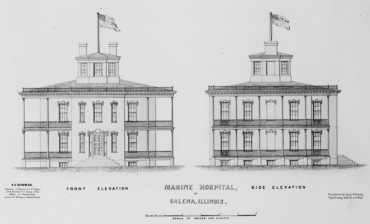
Figure 3. Marine Hospital Front and Side Elevations.
Historic American Buildings Survey - Library of Congress.
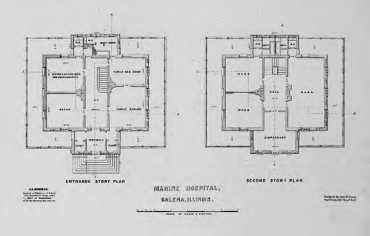
Figure 4. Marine Hospital Entry and Second Story Plan.
Historic American Buildings Survey - Library of Congress.
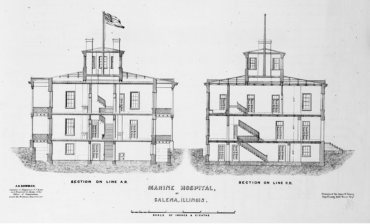
Figure 5. Marine Hospital Section Drawings.
Historic American Buildings Survey - Library of Congress.

Figure 6. Marine Hospital showing unique vaulted brick ceilings
supported by iron beams and then covered with lath and plaster.
Note also the vents in the interior brick wall which opened into
a four inch space between the interior and exterior walls.
- Neg. # 3 - Galena State Historic Sites Office.

Figure 7. Marine Hospital's Elegant Iron Staircase with
whale and shell motif on fascia.
Mahogany railing topped the iron balusters.
- Neg. 27 - Galena State Historic Sites Office.
The Marine Hospital also had a novel way to avoid dampness and drafts inside its brick walls. There were actually two--almost twelve inch thick--walls with a 4-inch gap between them. This permitted ventilation, aided with a series of grates through the inner wall that could be opened or closed. The effect was to moderate both cold winter temperatures and hot summer temperatures.
And the central cast iron stairway that climbed from the basement to the belvedere was a masterpiece. Similar to the one in Galena's U. S. Post Office, it differed by having as ornamentation a mariner's theme, with a continuous band of whales and shells motif along the length of the fascia (Figure 7). The railing is solid mahogany.
It should be noted that, due to Congressman Washburne's efforts, Galena was getting another new government building at the same time, a combination U. S. Custom House and Post Office, still in use today. Ammi B. Young was also the architect for this latter building, perhaps the oldest still in use in the country (it was designated by the Smithsonian as the second oldest, over 20 years ago). As Supervising Architect for the Department of Treasury, Young designed a multitude of government buildings.
Both the Custom House/Post Office and Marine Hospital were built at the same time and the engineer in charge of construction for both was the Seneca Indian, Ely S. Parker, who became U. S. Grant's personal secretary during the Civil War. The person in charge of disbursements, subject to approval by the U. S. Treasury, was Galenian Daniel Wann, Surveyor of Customs. Formerly engaged in the mercantile business, he was meticulous in his attention to detail.
Ground was broken for the new hospital in April. It was a low key affair. The paper reported the occasion as follows:
Yesterday morning, workmen broke ground for the foundation of the Marine Hospital. The contractors, Messrs. Gager and Joyce...for their friends, who were called to witness the operation, prepared a generous table of refreshments...over which, from a vigorous oak sapling raised for the occasion, floated the ever glorious stars and stripes. (Galena Daily Advertiser, 24 April 1857.)
It's uncertain if the "vigorous oak sapling" was cut and raised for the occasion, or whether they simply used a live tree; the giant white oak tree standing behind the hospital today would have been a fine young tree at the time (Figure 8).

Figure 8. Marine Hospital's giant white oak tree
- Neg. 22 - Galena State Historic Sites Office.
Construction progress did not go as rapidly as first hoped. A suitable pressed brick could only be found from one manufacturer in Dubuque (Galena Daily Courier, 25 April 1857). And the stone the contractor had to dig through was also a problem. An official report prepared by the Chief of the Construction Bureau of the Treasury Department noted the progress--and delays--of construction of the hospital:
"The causes which have retarded its progress, principally, are the same difficulty in procuring stone as was experienced at the neighboring city of Dubuque, as the stone had ultimately to be brought from Nauvoo; and the great difficulty in procuring suitable bricks. The excavations of the cellar and cisterns had to be made through rotten rock instead of stone, as it was supposed. These difficulties have been overcome; the sub-foundation walls are all laid, the main drain constructed, small cistern, containing 10,000 gallons, built and covered; excavation of a large cistern made, underpinning stone cut and ready to be set, door and window frames, sashes and doors and portion of the inside mouldings, are finished. It is hoped that the walls of the cellar and large cistern may be completed this season." (Weekly North Western Gazette, 19 January 1858.)
It had already been determined that stone for the foundation would come from the quarries at Nauvoo, Illinois. These quarries, which had been used by the Mormons to build their first temple, were visited by Ely Parker, who noticed their superior quality stone. He authorized their use for both the Marine Hospital and Custom House/Post Office.
It should be noted that even before the Marine Hospital was finished in 1859, the U. S. Treasury Department had authorized Daniel Wann, Surveyor of Customs and Agent for the Marine Hospital, to care for sick and disabled boatmen by housing them in private homes. For the month of October, 1857, for example, seven of them were treated and released for a cost to the government of $176.64 ("Moneys received and expended by Daniel Wann, U. S. Treasury Document," The National Archives, No. 128. Copy in the Marine Hospital file of the Galena State Historic Sites office). In all some 41 boatmen were cared for in this way, most for relatively minor complaints. All were released after care and treatment.
Meanwhile, work on the Marine Hospital continued and was completed, largely on schedule, in October of 1859 (Figure 9). A letter dated October 31, 1859 from the Treasury Department summarized the expenses:
"Construction, including cost of land --$48, 203; Fencing the grounds (all 11 acres) - $2200; and $1377 for furnishings" (Letter #46, Treasury Department, copy in Marine Hospital file housed at the Galena State Historic Sites office).
The editor of the Daily Courier thought its "fine architectural appearance, beautiful location, and spacious grounds" would make it a "favorite point for pleasure drives and promenades" (23 June 1859). On a more practical note, he reported that the building could accommodate 40 to 50 patients at a time. That capacity would never be reached (Figure 10).

Figure 9. Looking upstream with Flour Mill on left
and Marine Hospital on right (circa 1860).
This may be one of the earliest photos of the new hospital.
Alfred W. Mueller Collection - Galena State Historic Sites Office.

Figure 10. Marine Hospital near the end
of German-English school tenure
Alfred W. Mueller Collection - Galena Public Library.
The job of physician and surgeon was awarded to Dr. Horatio Newhall, one of Galena's earliest and most respected medical men. His salary was placed at $800 per year, the highest of anyone connected with the Hospital (Treasury Department Letter #46, March 30, 1861, copy in Galena State Historic Sites Office).
Hopes were high that Galena's new Marine Hospital would be not only a humanitarian success but a financial one as well. After it was up and running Elihu Washburne requested the Treasury Department to state whether the amount of Hospital money collected at Galena was "not comparatively larger than at other ports where Marine Hospitals were in Operation" (Letter #46). It wasn't. In fact, of 23 hospitals Galena ranked tenth from the bottom, and all of those ten were substantially below the larger hospitals.
It was also noted in the same Treasury Department letter (Letter #46) that during its first year of operation Galena's Marine Hospital treated (and released) forty-one patients. The cost for one week's stay was $3.00. The numbers only went down from there. Most patients stayed only a short time.
Over the years there have been persistent reports of multiple burials at the site. There is even a copy of a hand-written letter from the time period requesting the need for 200-300 coffins. But the evidence is not there. The signatures on the letter do not match any of those involved with the Galena hospital. There may indeed be a few burials at the site, but as mentioned above, the overwhelming majority of patients were short-term and there were never very many. Only the largest marine hospitals could account for those numbers, i.e. New Orleans, Louisville, Chicago.
The expenditures of the government to run the hospital far outstripped income. The reasons were many, but a river silting up, the Civil War and a blockade of the lower Mississippi, historic low water levels in 1864-65 that virtually closed the Galena River, and the competition of the railroads, all had devastating effects. With the end of the war, the handwriting was on the wall. It was hoped that sick and wounded Civil War soldiers might be sent to Galena, but it did not happen. Instead, larger and more accessible ports got that traffic: New Orleans, St. Louis, Chicago and Louisville.
At the end of the War, the Treasury Department, acting on congressional action, began closing low performing hospitals. Congressman Washburne at first resisted; he wrote a letter to the Secretary of the Treasury on August 11, 1865 stating: "But now there is a different state of things--the river is open all the way, we are likely to have a good winter, and the boating interests must be greatly stimulated" (Correspondence in the Marine Hospital folder, State Historic Sites Office).
Washburne also enclosed a petition from the boating interests imploring the Treasury Department not to discontinue the hospital at Galena, the only one north of St. Louis. It was signed by the Directors of all the largest lines running boats on the Upper River (St. Louis to St. Paul): the Lacrosse Packet Co., Minnesota Packet Co., Prairie du Chien Packet Co., and the Northern Line. (Correspondence in the Marine Hospital folder, State Historic Sites Office). Also signing were captains, engineers, and pilots. The Treasury Department reluctantly agreed to keep it open a few months longer, but to no avail.
The handwriting was on the wall; while expenses were kept low, the Galena hospital was tending to very few (and at times zero) patients. Washburne, always a pragmatist, shortly introduced a bill in the House providing for the closure and sale of a number of Marine Hospitals, including the one in Galena (clipping dated 12 February 1866 in the Marine Hospital files housed at the Galena State Historic Sites Office). After six years of service the hospital formally closed on December 31, 1866.
An editorial in the Galena Daily Gazette (6 January 1866) summed it up as follows:
"...the marine hospital system of the country has on the whole proved a failure. It was established with the best and noblest intentions... The buildings for the hospitals were erected with great cost and admirably adapted to the purpose designed... But, after all, the number of patients were too few to warrant the expense..."
Galena's few remaining patients were transferred to Chicago's marine hospital.
All furnishings and equipment were to be sold at public auction. A complete inventory of everything sold and the price it brought at auction was recorded by the Department of Treasury. A copy is in the Marine Hospital folder in the Galena Historic Sites Office.
Literally everything went: beds, stoves, tables, dressers, medicines, blankets, spittoons, silverware, curtains, shirts, etc. Sadly, most items went for pennies on the dollar. H. H. Chandler bought six parlor chairs for $4.30 each; Dr. Kittoe bought six cane chairs for $2.00 each; J. Mahoney bought two trays and a pitcher for 35 cents; Dr. Crawford bought a case of instruments for $3.50; new shirts were going for 85 cents apiece; and the list goes on and on.
The building and grounds were advertised for public auction in April of 1867. Galena's Weekly Gazette described the property in glowing terms (Figure11):
"Its situation is one of the most picturesque that we have seen. The grounds contain about eleven acres...and are enclosed with a most substantial and beautiful picket fence, and it is well calculated for many kinds of nursery planting, for the raising of grapes, or for ornamental effect... Its situation is high, dry and healthy... The building is well adapted for the purposes either of a magnificent private residence or for a permanent school of a high order. There is also on the grounds another small and convenient building, built for and occupied as a dwelling for a family." (Galena Weekly Gazette, 30 April 1867.)

Figure 11. Marine Hospital after it became
the German-English Normal School
(road, path up the hill and picket fence shown)
- Alfred W. Mueller Collection- Galena State Historic Sites Office.
Descriptions of the building almost always noted its substantial--and novel--construction (Figures 12 and 13):
"With the exception of the Custom Houses here and at Dubuque, it is perhaps the most substantially built of any in the Northwest. It is built of brick. Its framework is iron; the floors are inlaid with brick; the principal circular stairway is of iron; it may be warmed either with the furnace in the basement of the house, or with stoves; the walls are thick, and being hollow, gather no dampness. The whole building from top to bottom, can be thrown open and ventilated in a few minutes time." (Galena Daily Gazette, 24 April 1867.)
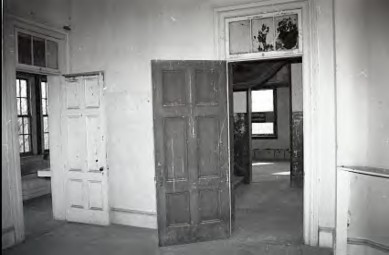
Figure 12. Marine Hospital showing spacious room layout.
- Neg. 11 Galena State Historic Sites Office.
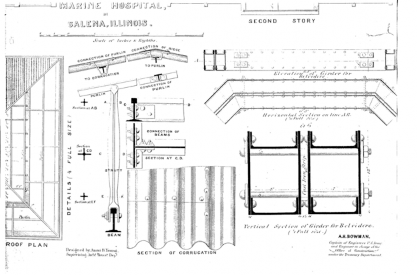
Figure 13. Unique roof construction was years ahead
of its time and intended to last even longer.
Library of Congress – Copy in the Galena Historic Sites Office.

